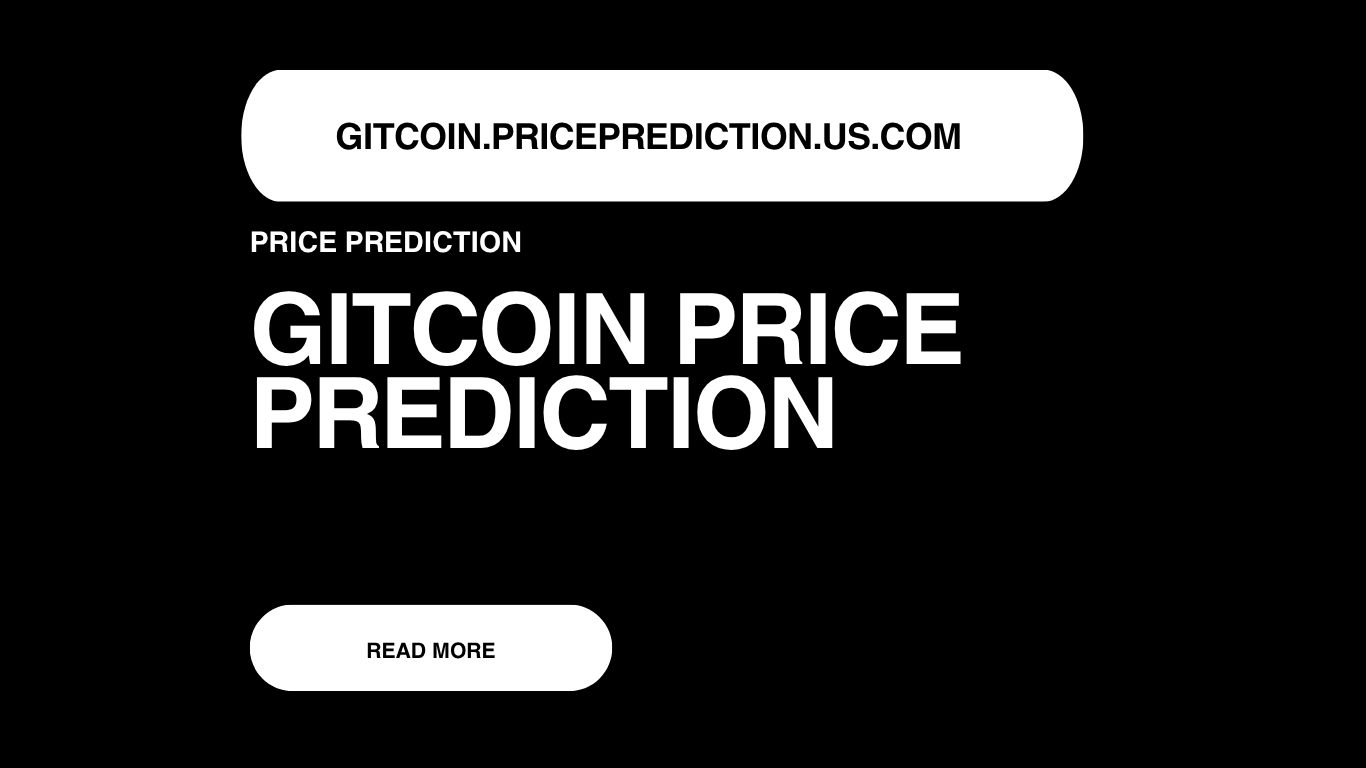Current Price
As of now, Gitcoin (GTC) is trading live, showing slight volatility in the broader altcoin market. It remains a mid-cap asset with strong community backing, and interest in its governance and grant functions is increasing.
Explore Gitcoin price prediction guide. Forecasts from 2025 to 2040, tokenomics, technical analysis, and Gitcoin’s roadmap—all in one comprehensive article.

In a world where open-source innovation powers much of our digital lives, few projects are as crucial as Gitcoin (GTC). It's not just a token—Gitcoin is a movement. A movement supporting developers who write the code that quietly runs the world.
The platform connects developers to funding through public goods grants, bounties, and hackathons. But Gitcoin isn't content with the status quo—it’s pioneering Quadratic Funding, decentralized governance, and community empowerment in ways no other project dares to do.
So, what’s next for GTC, the token that fuels this mission? This article breaks down the Gitcoin price prediction from 2025 through 2040, while weaving in the emotional power behind building something for the greater good.
As of now, Gitcoin (GTC) is trading live, showing slight volatility in the broader altcoin market. It remains a mid-cap asset with strong community backing, and interest in its governance and grant functions is increasing.
Technically, GTC is forming a long-term accumulation zone. This could be the calm before a breakout. The 50-day EMA recently crossed above the 200-day EMA—a bullish golden cross pattern—suggesting upward momentum may soon build.
MACD is neutral but beginning to shift upward, while RSI is sitting at 52, offering headroom for price growth.
By 2025, Gitcoin could reach $1.85, supported by increased adoption of Quadratic Funding and growth in funding for open-source projects. As web3 organizations adopt Gitcoin for ecosystem grants, GTC could see more on-chain demand and visibility.
In 2026, Gitcoin may rise to $2.60. With the global spotlight shifting to decentralized governance, Gitcoin’s DAO model could be a leader in demonstrating how public goods can be funded fairly and equitably. More DAOs could utilize Gitcoin’s funding infrastructure, potentially driving the token’s value higher.
By 2027, Gitcoin could be valued at around $3.90, especially if institutional collaborations or university partnerships integrate Gitcoin’s grant system. The token could also gain traction as the backbone of ethical Web3 funding.
In 2028, GTC may climb to $5.10, driven by full DAO independence, a mature ecosystem of community-led rounds, and collaborations with real-world civic tech initiatives. As digital public goods become mainstream, Gitcoin could emerge as a central player.
Gitcoin might reach $6.40 in 2029, assuming continued growth of its funding infrastructure, cross-chain support, and successful use cases that demonstrate Quadratic Funding's improvement of real-world outcomes, ranging from climate tech to education.
By 2030, Gitcoin could reach $8.20, as it transitions from a niche developer tool to a universal platform for any mission-driven community looking to fund transparent, democratic development. At this point, the GTC token would likely be deeply embedded in DAO treasury strategies.
Looking further, by 2035, Gitcoin might be trading near $15.50. If it becomes the primary hub for funding digital public goods globally, Gitcoin may serve governments, open-source collectives, and non-profits with its deeply democratic model of resource distribution.
In 2040, Gitcoin could reach $35.80, marking its mature phase as a decentralized institution that powers the next generation of open-source infrastructure. At this level, GTC would be seen not only as a governance token but as a symbol of the open internet.
Gitcoin is a platform for building and funding digital public goods. Through innovative funding models like Quadratic Funding, Gitcoin empowers developers to receive financial support directly from the community.
Since its launch, Gitcoin has facilitated over $60 million in funding for open-source projects, with GTC at the core of its DAO governance and ecosystem incentives.
Gitcoin’s impact expands beyond crypto—it’s a cultural cornerstone in the fight for a freer, more open web. Every GTC holder becomes part of that narrative.
What is Gitcoin used for?
GTC is a governance token used to vote on funding rounds, protocol upgrades, and strategic direction for Gitcoin’s ecosystem.
Is Gitcoin a good investment?
It’s a high-potential project with real-world utility. If you believe in the future of open-source, Gitcoin offers strong fundamentals.
What makes Gitcoin unique?
Gitcoin pioneers Quadratic Funding, which empowers smaller contributors by giving their votes more impact, democratizing how funding is allocated.
Can Gitcoin hit $10?
If the platform scales to fund civic tech, open internet infrastructure, or partners with governments, a $10 price target is achievable in the long term.
Bullish Signals:
Bearish Risks:
Gitcoin is riding a wave of several major macro trends: decentralized governance, public goods funding, ethical finance, and open-source sustainability. As more communities reject traditional VC models and seek decentralized support, Gitcoin’s infrastructure becomes increasingly vital.
Gitcoin’s future may also include integrations with AI development funding, climate transparency tech, and global civic grant models, turning it into a key layer of global digital infrastructure.
Provide clear contact information, including phone number, email, and address.

Explore ZBCN price prediction from 2026 to 2040. Get insights into technical analysis, future trends, tokenomics, roadmap, and long-term value forecast for the ZBCN token.

ASTER price prediction explained in simple words for beginners. A clear year-by-year outlook from 2026 to 2040 for the ASTER coin.

Discover KULR stock price prediction from 2025 to 2040. Explore forecasts, technical analysis, roadmap, and future trends driving growth in battery safety and thermal management.